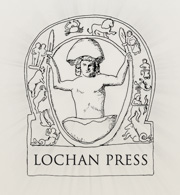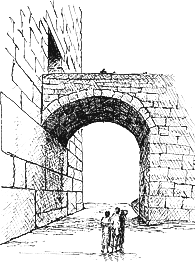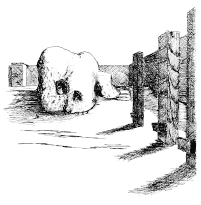|
Myth-Maker Marcos | ch 26
Because Marcos lacked the minor details of Joses/Jesus’s final days, he resorted to concocting a story of the final days of his Son of God from the contemporary Roman seven-day drama depicting the death and resurrection of the Mystery deity Attis. ... .. Attis’s drama began on:
Thursday the 15th of March and was called the canna intrat, the entrance of the reed-bearers. This probably commemorated the early life of Attis who was abandoned in reeds on the banks of the river Gallus, Anatolia, from where he was miraculously saved, cf. Moses.
Thursday the 22nd of March, the vernal equinox, was the arbor intrat, the entry of the tree. Mythically, Attis emasculating himself under a pine tree, spilled his blood for universal salvation, and then died and resurrected. The society of dendrophori (tree-bearers), who were woodcutters and timber merchants, cut down a pine tree which symbolised Attis. They bedecked it with purple woollen ribbons and violets, and carried it in procession. The procession ended with the triumphal entry to the square before the Metroon (Gk. metra-womb), the Temple of Cybele, on the Palatine hill. There the dendrophori set the tree upright.
(Only a few evergreen trees surrounded the Metroon, hence the necessity for the introduction of a tree from elsewhere. However, many pine trees surrounded Cybele’s other temple, the Phrygianum, on the Mons Vaticanus where an uncut tree served as a gibbet. Here the faithful carried pine branches instead of a pine tree as a symbol of Attis. These pine branches returned in a later Gospel as waved palm leaves).
In the dramatic Rites of Spring, Attis’s adherents fixed an effigy of their God to the chosen bedecked pine trees. On Friday 23rd of March, before sunrise, the tree-bearers cut down the pine trees and solemnly bore them, to ululations of lamenting women, either into the Metroon or the Phrygianum where they laid them flat symbolising the death of Attis. At the end of this ‘day of mourning’ priests closed the temple doors.
On the 24th of March, sanguem (the day of blood), grieving priests of Attis lacerated their forearms or self-flagellated and allowed their blood to spill to the ground to emulate Attis’s suffering. The spirit/life force in the blood ostensibly suffused and fertilised the whole earth causing quickening of plant life, so bringing universal salvation from hunger for another year. Mythically, Attis survived death. On this day, the adherents believed the dead Attis/pinetree resided in Hades.
The Romans called Sunday the 25th of March, hilaria – the day of joy. (The 25th of March was always a Sunday because of the nature of the Roman calendar). At dawn on this day, Friday’s lamenting grief-stricken women approached the Temple of Our Lady Cybele in reverent silence. As they climbed either the Palatine or the Vatican hills, they noticed the heavy Temple doors ajar and within, lighted candles. At the open door stood a priest (dressed in white). As he anointed the women’s throats (necks), he whispered reverently, “Be of good heart, you novices, because the God is saved. Deliverance from distress (suffering and death) will come for us as well.” (Firmicus Maternus, c.350 AD. reported the above words of the Priest of Cybele on the morning of Easter Sunday but Maternus, being a Hellenistic Galilean, probably chose a liturgy which differed the most from that of his own cult. The priestly greetings reported by other authorities were, ‘He has risen, be of good cheer,’ or ‘Rejoice, rejoice. He has risen. Salvation will come to us as well.’ Presumably, in the temples, the trees were standing upright (i.e. resurrected) bedecked and alive with lighted candles (cf. Christmas tree).
The women returned from the temples of Our Lady rejoicing because of the glad tidings or evangel (good news) that their God, Attis, personified in the pine tree, had risen from the dead, a glorious miracle which would ensure the general rising of vegetation from Winter’s death. The vegetation, all plant life, not least the staple food, corn, was now sure to rise again for their salvation.
The 26th of March was requitio, the day of rest.
The 27th of March was lavatio, the day of ablution, when the faithful took the Black Madonna Cybele, the Mother of Gods, from her temple and placed her upon an oxen cart. She, a doll clothed in a jewel-encrusted dress with a crowned silver-encased black-meteorite head, lurched and swayed on her way to a brook called the Almo. Here they washed her, the accompanying sacred objects, and the cart. They bedecked the cart and oxen with fresh flowers to encourage springtime and then returned the refreshed and spring-cleaned Madonna to her home, the Metroon.
Marcos used many of these rites in his Gospel:
The canna intrat involved reeds – Marcos wrote, ‘they smote him (the Xristos) on the head with a reed!’
The triumphal entry of the pine tree, the arbor intrat; became the Xristos’s triumphal entry to Jerusalem.
The dendrophori (woodsmen) carried the pine tree; the Xristos (the carpenter) carried the wooden stave/stauron.
Adherents bedecked the pine tree in purple violets and ribbons; soldiers dressed the Xristos in a purple cloak.
The women lamented as Attis hung; women from afar watched as the Xristos hung.
Attis’s blood spilt whilst he hung on a tree trunk; presumably Xristos Jesus’s blood spilt whilst he hung on a tree trunk (the gibbet).
The dead pine tree lay in a temple; the dead Xristos lay in a sepulchre.
The Saturday of Easter was a day of blood (sanguem); the Passah/Passover Sabbath in the Temple of Jerusalem involved many sacrifices thus an abundance of blood.
The door of the temple (Metroon or Phrygianum) lay open on Sunday morning; the stone door of Joses/Jesus’ sepulchre lay open on the Sunday morning.
A priest in white vestments at the door of the Temple announced the glad tidings (‘He has risen’); in Jesus’s sepulchre a man in long white robes announced, ‘He has risen, he is not here ... He goes before you unto Galilee.’
Not only did Marcos use the events of the Attis drama play more or less in the correct order but also he used it roughly as his timetable: ...
|




